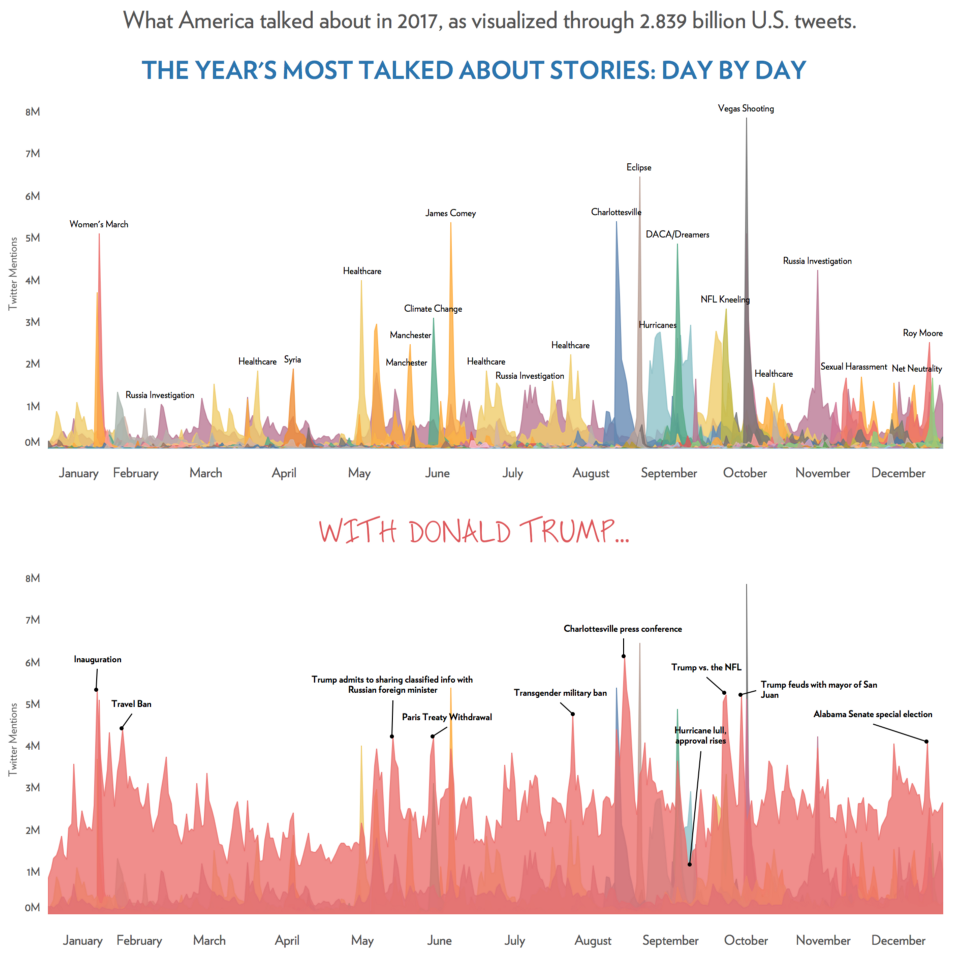
Source: Visual Capitalist
This is a fascinating look at what we tweeted about the most in 2017. Lots of the largest tweet-spasms are about issues that are fleeting and temporary yet capture an outsized amount of attention.
Example: The peak numbers of tweets were about the terrible assault in Las Vegas on concert goers that killed 59 and wounded 100s. But the statistical reality is that “people killed in mass shootings make up less than half of 1 percent of the people shot to death in the United States.”
But that might work to create a false impression of gun violence in America. The facts are that mass shootings like this are only a small subset of gun-related killings in the United States; and somewhat surprising to most people, a majority of the 33,000 plus gun-related homicides each year are suicides. In 2013, of the 33,636 deaths due to “injury by firearms” 11,208 homicides, but a whopping 21,175 were suicides.
The point being we get a distorted picture of reality by looking at the frequency what gets written (and tweeted) about. It creates a statistically non-representative picture of reality.
The reality is 2017 was statistically one of the safest years in history, both in the United States and around the world, for reduced violence of all sorts.
Incidentally, I am Pro-Gun control: tougher background checks, full registration of guns, anti-military assault rifles, insurance (like for cars) for owners, anti-large capacity magazines, auto-loaders, bump stocks, etc.
However, I understand that if we really want to have an impact on reducing gun violence, the fascination with mass shootings needs to be replaced with efforts to reduce suicides — disproportionately done by Military Veterans — and stop shootings between family members and acquaintances.
The point is not about guns; rather, it is about how we perceive information and new . .
Resources for researching gun data
FastStats: Mortality – All firearm deaths. Centers for Disease Control and Prevention.
Firearms and Violence: A Critical Review.In Wellford, Charles F.; Pepper, John V.; Petrie, Carol V. Washington, DC: National Academies Press. National Research Council (2004).
Priorities for Research to Reduce the Threat of Firearm-Related Violence The National Academies Press. 2013
Homicides by firearms UNODC

